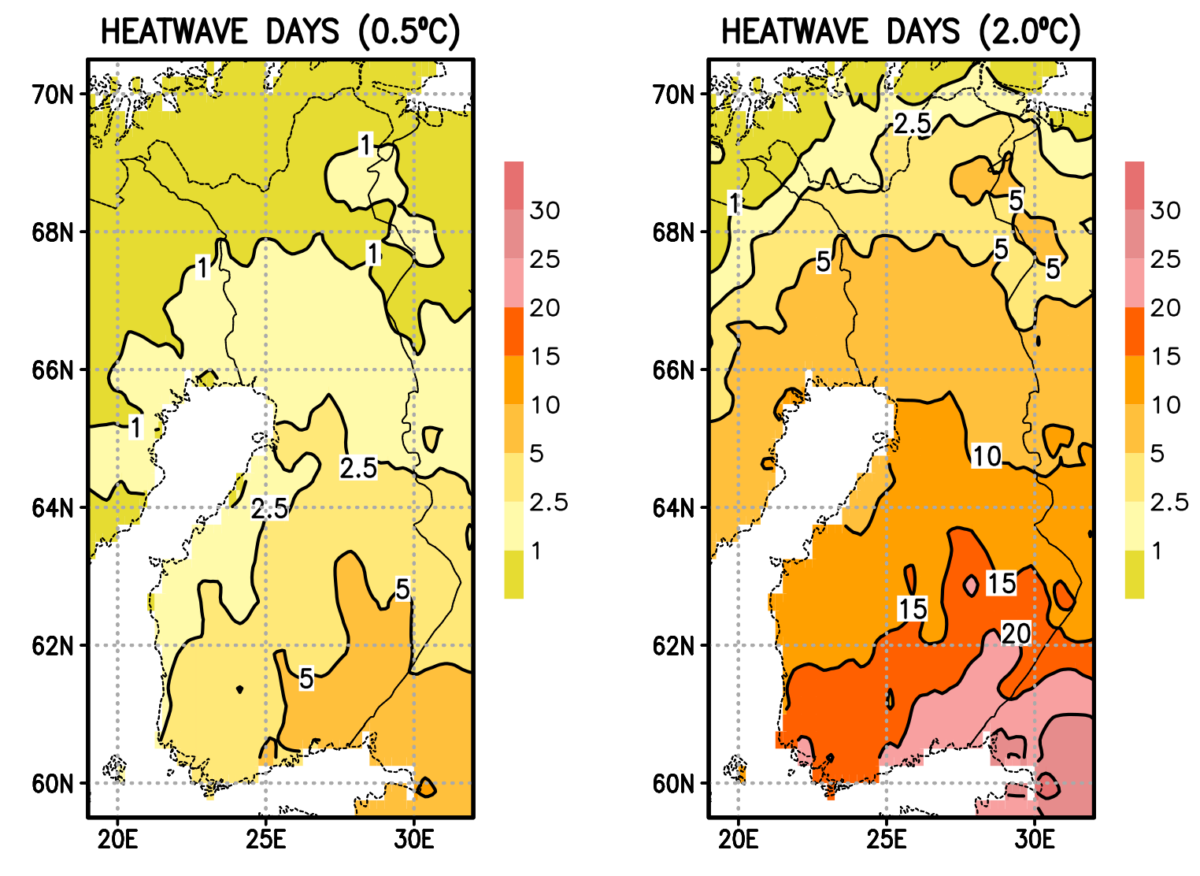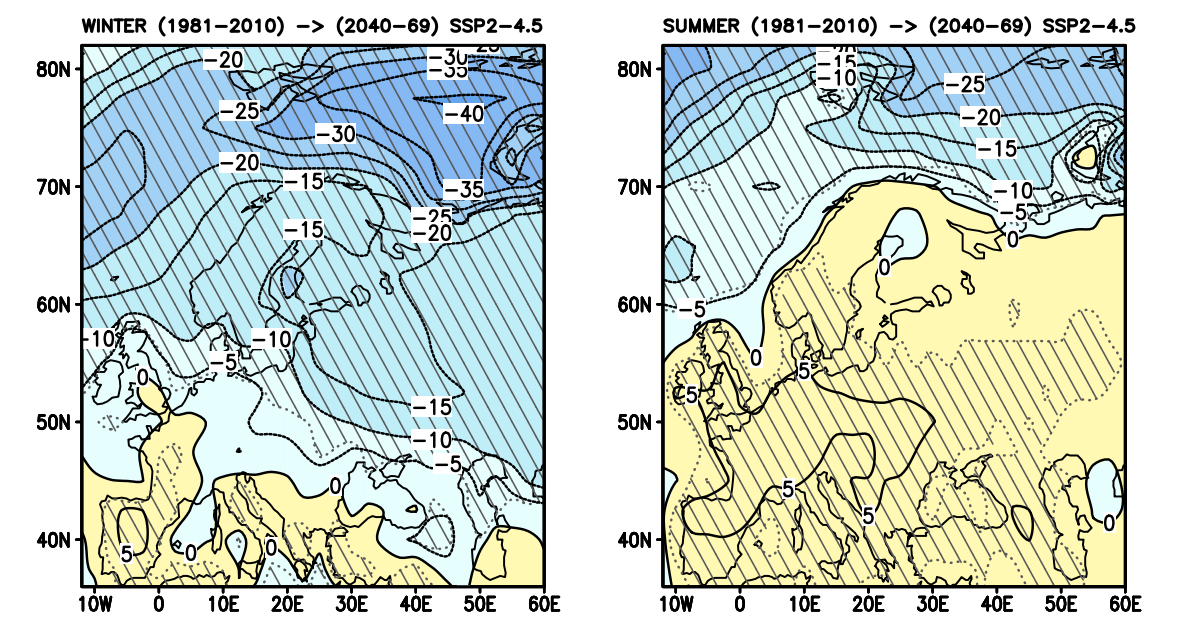Vol. 58, No. 1, 2023
Abstract
Even in the cool climate of Finland, severe heatwaves occur sporadically, having multiple implications on public health, forestry, fishery, agriculture, and reindeer husbandry, for instance. This study assesses the occurrence and severity of ≥ 3 -day heatwaves in Finland at the 0.5°C, 1.0°C, 1.5°C, and 2.0°C global warming levels above pre-industrial conditions, utilising bias-corrected daily-mean temperature data from 60 runs performed with 25 global climate models. The severity of a heatwave is measured by the heatwave extremity index, consisting of the sum of exceedances above a fixed threshold of daily mean temperature. Three alternative threshold temperatures, 20°C, 24°C and 28°C, are considered. A shift from the 0.5°C to 2.0°C global warming level is projected to result in an increase in the mean annual number of heatwave days above 20°C from 1 to 5 in central Lapland and from 5 to 20 in south-eastern Finland. Concurrently, the annual sum of the extremity index becomes 4 to 10 -fold. The higher the threshold temperature, the larger is the growth in relative terms. At the 2.0°C global warming level, heatwaves above 20°C are experienced in southern Finland nearly every year and in the majority of northern Lapland approximately every second year. Apart from Lapland, heatwaves occurring once in 10 (100) years at the 0.5°C warming level will then have annual probabilities of 50 % (> 10%). Even between the 1.5°C and 2.0°C global warming levels, projected changes in heatwave characteristics are substantial, especially for the most severe heatwaves. For example, in southern and centralFinland, a heatwave with an annual probability of 12 % to 13 % at the 1.5°C warming level is projected tosubstantially increase in likelihood under the 2.0°C warming level, up to 19 % to 21 %. The paper includes a literature review on potential impacts of the intensifying heatwaves.

